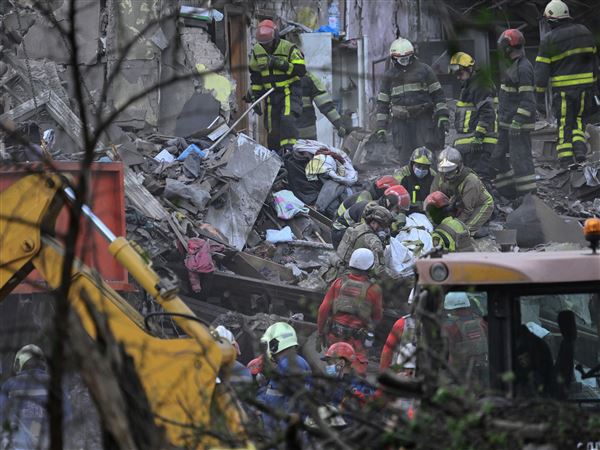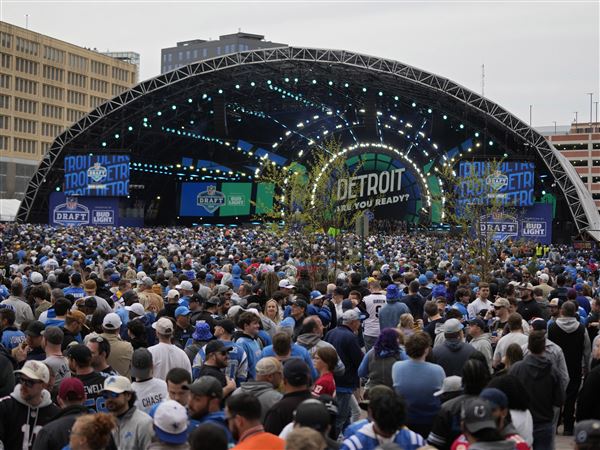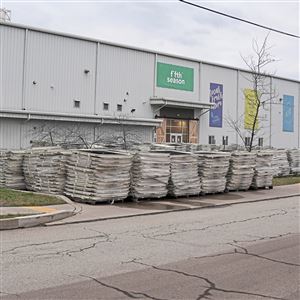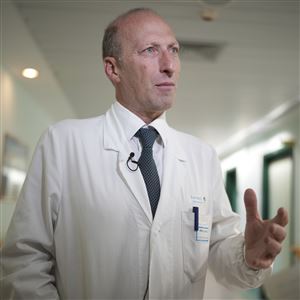JOHANNESBURG, South Africa
When Douglas Guy was leading demonstrations against South African apartheid as chairman of the Black Action Society at the University Pittsburgh in 1976, he barely understood what apartheid meant.

Douglas Guy's experiences growing up in New Kensington serve him well in his new home and career in South Africa.
Click photo for larger image.
An African-American raised in New Kensington, Guy certainly understood racial discrimination. He still bristles when he recalls the humiliating questions his mother had to endure to get government housing assistance -- such as how many husbands she'd had and how often she bathed her children. And he remembers how the black fathers working in the mills and mines were always the first ones to get laid off when times were bad.
But Guy didn't really comprehend apartheid until he visited South Africa for the first time in 1995, nearly two decades after denouncing it in Pittsburgh.
By that time, the often-brutal system of racial segregation that had kept a small minority of whites in firm control of South Africa's black majority had crumbled under the weight of internal dissent and world condemnation. Yet most whites still lived in spacious homes and shopped at modern malls, while most blacks continued to inhabit jerry-rigged shacks in township slums and picked up supplies at neighborhood stalls.
Guy felt like doing something about it. So these days, instead of protesting in the streets, he is demonstrating ways to build decent, affordable, energy-efficient housing for those South Africans who remain at the bottom of what is now a democratic, market-oriented political system.
No embarrassing questions are involved.
Far from New Kensington
When Guy arrived in South Africa with a degree in engineering and good intentions, he had left a lucrative position with Environmental Resources Management Inc. in West Chester, Chestery County, one of the largest privately held environmental engineering companies in the world. He came to start a new venture with business colleague Lilia A. Abron, who is thought to be the first African-American woman to earn a Ph.D. in environmental/chemical engineering.
They began to investigate what South Africa needed in the way of clean water systems, waste management or other critical infrastructure. Around that time, U.S. Vice President Al Gore and South Africa Deputy President Thabo Mbeki were setting up a binational commission to explore how to improve conditions in South Africa, and South Africa's heroic dissident-turned-president, Nelson Mandela, was calling on the nation to build 1 million houses for the poor.
Guy and Abron got involved with the commission and shifted their new firm's focus to developing affordable, locally produced, energy-efficient, environmentally friendly housing. For Guy, this was not just business or a matter of doing good deeds. It was personal.
He remembered how hard it had been for his own family to find a decent place to live back in New Kensington in the 1960s. His mother supported him and his four brothers and sisters by cleaning houses for affluent white families and working as a nursing assistant at a local hospital. They lived near an Alcoa Co. aluminum plant on Second Avenue and wanted to escape the noise and smoke of town but couldn't afford to move without government assistance.
The family finally managed to find a new, quieter place, but only after their mother swallowed her pride and answered all of the housing agency's humiliating questions.
"These officials even checked to see how clean our kitchen was even though my mother was cleaning their houses and kitchens," Guy said. "During those times, our fathers worked anywhere they could get work and were often the last hired and first fired. There was frustration from the men in our communities that they could not get mortgages or loans.
"Our fathers were not allowed to have home loans but were given loans for expensive cars. This put a lot of strain on our families and many family relationships suffered. Back then it seemed like the ... urban renewal program seemed to favor families where the father was absent and almost penalized families where the father was in the house and working."
When Guy arrived in South Africa in 1995 with a bachelor's degree in African studies, an MBA in information technology and good intentions, he had left a lucrative position with Environmental Resources Management Inc. in West Chester, Chester County, one of the largest privately held environmental engineering companies in the world.
At ERM, Guy was developing software that allowed industries to automatically monitor and report their adherence to environmental regulations when he decided to start a new venture in South Africa.
He teamed with business acquaintance Lilia A. Abron, one of the first African-American women to earn a Ph.D. in environmental/chemical engineering, and they began to investigate what South Africa needed in the way of clean water systems, waste management and other critical environmental infrastructure. Guy and Abron set up a company call PEER (Pollution, Environment, Community Development and Energy Resources) Africa, Ltd.
Around that time, U.S. Vice President Al Gore and South Africa Deputy President Thabo Mbeki were setting up a binational commission to improve conditions in post-apartheid South Africa, and South Africa's heroic dissident-turned-president, Nelson Mandela, was calling on the nation to build 1 million houses for the poor.
Guy and Abron met U.S. Energy Secretary Hazel O'Leary, a member of the Gore delegation, who suggested, "Why don't you two connect the energy issue and the housing? If you do, I'll support you."
So they did. And she did. And PEER Africa's focus turned toward developing affordable, locally produced, energy-efficient, environmentally friendly housing. For Guy this was not just business or a good deed. It was personal.
He remembered how hard it had been for his own family to find a decent place to live back in New Kensington in the 1960s. His mother helped support him and his four brothers and sisters by cleaning houses for affluent white families until she landed a job on the maintenance crew of a local hospital. His father worked at the Allegheny Ludlum steel mill in Brackenridge and did odd jobs, mostly fixing up old hourses, during frequent layoffs.
In the early 1960s, the family lived near the old Alcoa aluminum plant on Second Avenue, which was noisy and smoky, but they lost a chance to upgrade their living conditions when Guy's mother refused to answer the humiliating questions asked to qualify for the Urban Renewal Housing Project Program.
"These local housing officials even checked to see how clean our kitchen was, even though my mother was cleaning their houses and kitchens," said Guy. "During those times, our fathers worked anywhere they could get work and were often the last hired and first fired. There was frustration from the men in our communities that they could not get mortgages or loans.
"Our fathers were not allowed to have home loans but were given loans for expensive cars. This put a lot of strain on our families, and many family relationships suffered. Back then it seemed like the urban renewal program favored families where the father was absent and almost penalized families where the father was in the house and working."
Eventually, Guy's family qualified for what came to be known as "the projects" and moved into East Ken Manor on the outskirts of New Kensington, which Guy recalls as "very nice."
"There was a nice yard and we shared only one common wall with our neighbors. There were only about 10 black families out of about 100. ... We had a wonderful childhood there with lots of room for playing and exploring in the woods, playing sports and getting up to good clean mischief."
Integrating the local elementary school was tough, he remembers, but eventually all the children got used to each other and, in many cases, helped change their parents racial attitudes.
"I think when the Zola family invited me to come to their house, when I was in third grade, it was the first time I recall ever eating dinner in a white persons house. It was scary.
"The good side of things is that our community was very special, I realize that now, 40 years later after traveling around the world. I realize that the families, white and black, who lived in East Ken Manor and the surrounding area really grew up together and learned about each other."
It is an experience Guy would like to transplant to South Africa.
A ray of sunshine
Nine years after starting PEER Africa, Guy and Abron and various partners have designed some 45 different "EECO-houses" for different parts of South Africa and have trained hundreds of developers in how to build them. (EECO stands for Energy and Environmentally Cost-Optimized.)
They have worked with the U.S., South African and other governments, as well as private consultants and nongovernment organizations to get nearly 10,000 built in all nine provinces. Among the most helpful agencies has been the National Energy Technology Laboratory in Pittsburgh.
South Africa has sunshine for most of the year, so EECO houses make maximum use of solar energy to warm houses during the winter and save on wood, kerosene and coal, the most common household fuels. This usually does not involve solar panels that collect electricity; most poor South Africans can afford neither the panels nor electric appliances.
Roof overhangs, walls and windows are designed and oriented to let in maximum sunlight during the winter and to keep it out during the summer so that neither heating nor cooling is needed. One model employs a double brick wall, insulated ceilings and ventilation techniques that hold in winter heat so that poor families can save on fuel and avoid harmful fumes from traditional low-cost heating methods.
The importance of energy for warming and cooling poor people's homes is often underestimated in a modern-day South Africa that is wrapped in a veneer of economic success and political stability. Macro-economic indicators over the past 10 years have been almost uniformly positive, with the economy growing while inflation remains in check, a rare story in Africa.
But South Africa also has one of the widest gaps in the world between rich and poor, placing third behind only Brazil and Guatemala. Approximately 3.5 million households earn less than $500 per month, representing more than a third of the country's population of 40 million. The vast majority of these families live in makeshift housing.
In the new South Africa, built on the foundations of apartheid and colonialism, the posh malls and neighborhoods of Sandton and Houghton in Johannesburg exist side by side with the crime-ridden slums of Alexandra. In shantytown South Africa, overcrowding, faulty appliances and the burning of wood, coal and kerosene combine to cause deadly fires and health-destroying pollution. During biting winters, poor people freeze to death or risk asphyxiation by piling anything that burns into traditional tin heaters called mbwalas (em bow'las).
Although EECO houses are much safer than most existing housing units and cost relatively little -- a two-bedroom house runs about $6,000, with the government paying $5,000 -- most South Africans still have trouble getting mortgages. So PEER Africa helped design what has evolved into a "Green Finance" program for the poor that is funded in part by the World Bank, South African banks and community contributions. It is serving as a model for the country's departments of housing and energy.
Eddie Samuels, executive director for housing and community services for the city of Cape Town, has worked with Guy for four years.
"Guy's work has translated into new development in South Africa," he said. It means great comfort to the people who get EECO houses, as well as considerable energy saving for the country."
Personally, he said, Guy "can relate easily to the poorest of the poor as he can with the richest of the rich." Samuels calls him "a spirited community leader whose faith is very deep."
Evolving attitudes
Getting started in South Africa was not easy for an African-American working on behalf of African and other previously disadvantaged communities. Most local governments in the late 1990s were still controlled by white Afrikaner civil servants who had administered apartheid and were not keen to shift priorities or listen to outsiders.
Sometimes they quietly frustrated Guy's efforts to build alliances with local communities or acquire land. Or they simply denied contracts. But attitudes have evolved, and last July the South African government adopted energy-efficiency standards for all new home construction.
There remains an acute shortage of housing, as well as localized pollution and energy problems. But Guy, who describes himself as still "restless" at the age of 49, is satisfied that things are improving. He has made South Africa his permanent home and plans to be buried here.
Guy still returns to the Pittsburgh area several times a year to visit his three sons, other family and friends and to renew or create connections for his work. This past week he's been in Western Pennsylvania consulting with the national energy laboratory and talking with churches about sponsoring EECO projects in South Africa.
His mother, his brothers and sisters and two of his sons have traveled to Africa, and Guy hopes the youngest, now 9, will follow at some point.
"I do not think growing up in America, despite its wealth and material opportunity, prepares African-American children for the realities facing Africans in the diaspora in an ever-shrinking world. I want my boys to have choices and not swallow everything the American system feeds them. I want them to be proud of and learn from both their African heritage and the positive aspects of American culture, so that, hopefully, one day they can contribute to the redevelopment of Africa and other parts of the developing world."
At some point, Guy hopes to have seeded South Africa with enough good ideas and environmentally sensitive structures to feel ready to retire, then teach and write about how to build what he calls "a modern African village."
"I would like to write about people in various real-life situations, perhaps like the great author Robert Coles, who overcome adversity, especially adversity driven by fear and hate, and who choose love and compassion as weapons of choice and as the stepping stones to overcoming life's burdens."
For his work with underprivileged children and his writings about how children experience the world, Coles, a Harvard professor, was awarded the U.S. Medal of Freedom in 1998.
For his work in South Africa, Guy is called "Mothusi," which he has adopted as his middle name. In local Setswana, it means "the helper."
First Published: July 11, 2004, 4:00 a.m.













